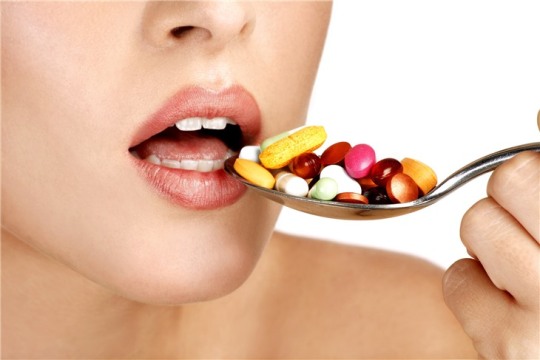#beauty nutrition
Explore tagged Tumblr posts
Text
The Rise of Natural Ingredients Prompts Growth in the Beauty Supplements Market
The beauty supplements market consists of oral dietary supplements aimed at enhancing physical beauty by nourishing skin, hair, and nails from within. Beauty supplements contain vitamins, minerals, proteins, omega fatty acids, and other natural ingredients that are beneficial for overall health as well as skin, hair, and nail quality. They are available in the form of tablets, capsules, powders, soft gels and liquids. Beauty supplements offer several advantages over topical treatments like lotions and potions as they work from inside out to impart natural glow, strengthen hair follicles and improve skin elasticity. With rising health concerns, the demand for clean label products made from organic and natural ingredients is on the rise. The Global Beauty Supplements Market is estimated to be valued at US$ 2979.84 Mn in 2024 and is expected to exhibit a CAGR of 5.5% over the forecast period between 2024 To 2031. Key Takeaways Key players operating in the Beauty Supplements market are Presto Geosystems, Polymer Group Inc., Strata Systems Inc., Armtec Infrastructure Inc., Maccaferri SPA, PRS Mediterranean Ltd., Maccaferri SPA, and Tensar International Ltd. The Beauty Supplements Market Growth is witnessing high increasing demand for products with natural ingredients among health-conscious consumers. Various vitamins, minerals and antioxidant-rich supplements are gaining popularity for their ability to deliver results without any side effects. The market is further strengthened by expansion of key players into international markets. Leading companies are focusing on geographic expansions and product launches catering to specific regional consumer needs to boost sales in foreign markets. Market Key Trends One of the key Beauty Supplements Market Size and Trends witnessed in the beauty supplements market is the rise of customized formulations. Manufactures are offering customized beauty supplements tailored to an individual's age, gender, skin and hair type. Through online consultations and diagnostic tests, they provide personalized recommendations and formulations targeted towards the unique nutritional needs of each consumer. This has increased customer stickiness and engagement with the brands.
Porter’s Analysis Threat of new entrants: Dietary supplement industry has moderate barriers for new companies to enter due to regulations and capital requirements. Bargaining power of buyers: Buyers have moderate bargaining power due to availability of substitutes and differentiation in products. Bargaining power of suppliers: Suppliers have moderate bargaining power as raw materials for supplements are commoditized. Threat of new substitutes: Threat of substitutes is moderate as new product innovations can disrupt the market. Competitive rivalry: Industry faces high competition due to several large players. Geographical Regions North America currently dominates the beauty supplements market in terms of value, with the United States being the major contributor. Factors such as increasing spending on beauty and wellness products, rising awareness regarding the benefits of beauty supplements and presence of major manufacturers driving market growth in the region. Asia Pacific region is expected to be the fastest growing market for beauty supplements during the forecast period. Increasing disposable incomes, growing health and wellness trends driving demand for nutritional and dietary supplements from countries like China and India will support market expansion. Rising urbanization and evolving consumer lifestyles are additional factors fueling market development opportunities across Asia Pacific.
Get more insights on Beauty Supplements Market
Unlock More Insights—Explore the Report in the Language You Prefer
French
German
Italian
Russian
Japanese
Chinese
Korean
Portuguese
Vaagisha brings over three years of expertise as a content editor in the market research domain. Originally a creative writer, she discovered her passion for editing, combining her flair for writing with a meticulous eye for detail. Her ability to craft and refine compelling content makes her an invaluable asset in delivering polished and engaging write-ups.
(LinkedIn: https://www.linkedin.com/in/vaagisha-singh-8080b91)

#Coherent Market Insights#Beauty Supplements Market#Beauty Supplements#Skin Health#Hair Growth#Nail Strength#Collagen#Anti-Aging#Glowing Skin#Vitamins For Beauty#Biotin#Hyaluronic Acid#Beauty Nutrition#Antioxidants
0 notes
Text
The Salad Revolution: Unveiling the Science of Radiant Skin Through Nutrient-Packed Meals
We’ve all heard the adage, “beauty comes from within,” but have you ever considered the profound impact your diet can have on the health and radiance of your skin? While a consistent skincare routine and quality products are undoubtedly important, the foundation for a truly glowing complexion lies in the nourishment you provide your body from the inside out. And what better way to achieve this…
0 notes
Text
0 notes
Text

breakfast!
btw i started drawing food and i don't think i'm gonna stop any time soon
#disco elysium#kimharry#kim kitsuragi#harrier du bois#yes it is just an excuse to draw food but heeeeeeyyyy first de fanart!#i'm training >:3#please ignore the fact that this is a completely different style than everything else#this is what i'm like when i'm not trying to draw conventionally beautiful things#food#ITS NOT A HEALTHY BREAKFAST#I KNOW WHAT NUTRITION IS
2K notes
·
View notes
Text
We have three brains: The head brain, the gut and the heart.
🧠 Head (Brain): This is where our logic, intellect, and conscious thought processes are centered. Despite its importance, 90% of our behavior is influenced by our unconscious mind.
How to take care:
🧠 Do activities that stimulate your brain, such as puzzles, reading, learning new skills, or practicing mindfulness meditation. These activities can help improve cognitive function and maintain brain health.
🧠 Healthy nutrition, regular exercise, adequate sleep, and managing stress are crucial for brain health. Physical health directly impacts your cognitive abilities and mental clarity.
🧠 Keep your brain active by learning new things regularly. This could involve hobbies, courses, or activities that challenge and stimulate your intellect.
🍽️ Gut: Often referred to as our "second brain," the gut produces a significant amount of serotonin, which plays a crucial role in mood regulation and overall emotional management.
How to take care:
🍽️ Eat a diet rich in fiber, fruits, vegetables, and probiotics (like yogurt or kefir) to promote a healthy gut microbiome. Avoid excessive sugar and processed foods.
🍽️ Drink plenty of water throughout the day to support digestion and overall gut function.
🍽️ Stress can negatively impact your gut health. Practice stress reduction techniques like deep breathing, yoga, or meditation to maintain a healthy gut-brain axis.
❤️ Heart: The heart has neural pathways that communicate with the brain, suggesting a bidirectional flow of information. This connection emphasizes the role of emotions, intuition, and feelings in our decision making and overall cognitive processes.
How to take care:
❤️ Maintain positive relationships, express your emotions constructively, and engage in activities that bring you happiness and fulfillment.
❤️ Regular exercise not only benefits the heart but also helps manage your emotions by releasing endorphins and reducing stress.
❤️ Take time for your self care activities that nurture your emotional and psychological health.
#healthy living#health and wellness#health#mental health#gut health#healthylifestyle#health & fitness#nutrition#wellness tips#wellness#beauty and wellness#mental wellness#wellnessjourney#wellness girl#healthy lifestyle#healthy life hacks#healthy life tips#healthy relationships#healthyliving
885 notes
·
View notes
Text

Nutrition & Wellness
#Biophilia#biophilia nutrition#biophilianutrition#sporty girls#fitness#wellness#selfcare#self care#self care tips#self care sunday#self care routine#self care reminder#fitness routine#fitspo#fashion#style#chic#Vogue#vogue italia#Vogue Paris#Vogue Magazine#vogue korea#vogue beauty#beauty#green juice#green juice girl#green juice aesthetic#nutrition#whole foods#erewhon
445 notes
·
View notes
Text

#big muscle#muscle#gym#bodybuilder#workout#musclular#exercise#bodybuilding#bodybuilding competition#bodybuilders#nutrition#health & fitness#gay underwear#tattooed#inked beauty
2K notes
·
View notes
Text

#healthy#health#food#inspiration#nutrition#nutrients#cooking#positivity#dinner#weight loss#self love quotes#motivating quotes#health quotes#weight loss quotes#inspiring quotes#beautiful quote#life quote#quoteoftheday#quotes#healthy recipes#healthy diet#healthy living#health tips#healthy food#weight loss motivation#motivational#motivation#inspirational#inspiring words#meal inspiration
92 notes
·
View notes
Text




216 notes
·
View notes
Text





I want to be the reason why you dream good at night! 😴 🛌
#slim and sexy#sleepy girl#sexy pose#so hot and sexy#sexy chick#beautiful#curvy and cute#quotes#cutie w a bootie#slim waist#natural body#gym body#health & fitness#nutrition#my post#superhot#thicc women#fashion#hot bikini
133 notes
·
View notes
Text
Beauty nutrition is the art of nourishing your body to enhance your natural radiance. By fueling your body with the right nutrients, you can achieve healthy skin, hair, and nails from within. Incorporating a balanced diet rich in vitamins, minerals, antioxidants, and essential fatty acids can promote skin elasticity, combat signs of aging, and foster a vibrant complexion. Foods like fruits, vegetables, nuts, and fish contribute to this transformation. Hydration also plays a key role, as water helps flush out toxins and keeps your skin hydrated. Beauty nutrition isn't just about superficial appearances; it's about fostering overall well-being that reflects on the outside. Embrace the power of beauty nutrition to glow from the inside out and radiate health and vitality.
1 note
·
View note
Text
The 13 Best Foods For Healthy Skin
Your skin is not only the body's largest organ but also a reflection of your overall health. Maintaining healthy and radiant skin requires more than just external skincare products; it begins with the nutrients you provide your body from the inside. A well-balanced diet rich in essential vitamins, minerals, and antioxidants can do wonders for your skin. In this article, we'll explore the 13 best foods for achieving and maintaining healthy, glowing skin.
1. Salmon:
Salmon is a fatty fish that's high in omega-3 fatty acids. These healthy fats help keep your skin moisturized and supple, reducing the appearance of fine lines and wrinkles. Omega-3s also have anti-inflammatory properties that can soothe skin conditions like eczema and psoriasis.
2. Avocado:
Avocados are packed with healthy fats, vitamins E and C, and antioxidants. These nutrients help keep your skin hydrated, protect it from UV damage, and promote collagen production, which is essential for skin elasticity.
3. Sweet Potatoes:
Sweet potatoes are rich in beta-carotene, a powerful antioxidant that can give your skin a healthy glow by protecting it from sun damage and preventing premature aging.
4. Berries:
Berries like blueberries, strawberries, and raspberries are loaded with antioxidants, particularly vitamin C. Antioxidants help combat free radicals, reducing skin cell damage and promoting a more youthful appearance.
5. Walnuts:
Walnuts are an excellent source of omega-3 fatty acids and vitamin E, which help maintain the skin's moisture and protect it from oxidative stress.
6. Spinach:
Spinach is rich in vitamin A, which is essential for skin health. It helps repair skin tissues, prevent acne, and maintain a healthy complexion.
7. Green Tea:
Green tea contains polyphenols and antioxidants that protect the skin from UV radiation and reduce the risk of skin cancer. Drinking green tea regularly can also help combat inflammation and keep your skin looking fresh.
8. Tomatoes:
Tomatoes are a great source of lycopene, an antioxidant that can reduce the risk of sunburn and skin aging. It also promotes collagen production and skin elasticity.
9. Dark Chocolate:
High-quality dark chocolate (70% cocoa or higher) is rich in antioxidants, specifically flavonols, which can improve skin texture, hydration, and blood flow, giving your skin a healthy glow.
10. Almonds:
Almonds are rich in vitamin E, a powerful antioxidant that helps protect your skin from harmful UV rays and environmental damage.
11. Yogurt:
Yogurt is packed with probiotics, which can promote a healthy gut. A balanced gut microbiome can lead to clearer skin by reducing inflammation and preventing acne.
12. Carrots:
Carrots are another great source of beta-carotene, which can help reduce skin dryness and promote a more youthful appearance.
13. Oats:
Oats are a good source of complex carbohydrates and fiber. They can help stabilize blood sugar levels, reducing the risk of acne and promoting clear skin.
While these foods can be a valuable addition to your diet for healthier skin, remember that no single food can work miracles. A well-rounded diet that includes a variety of nutrient-rich foods, along with proper hydration, is essential for achieving and maintaining radiant skin. Additionally, don't forget to protect your skin from excessive sun exposure, get enough sleep, and maintain a consistent skincare routine for the best results. Healthy, glowing skin is the result of both internal and external care, so make these foods a part of your daily routine and watch your skin thrive.

#skincare#skincare tips#beauty tips#glowing skin#skincare routine#antiaging#natural skin care products#acne#skin care#skin treatment#health tips#health#healingjourney#healthy skin#healthy#nutrition#healthy living#healthy eating#healthyfood
670 notes
·
View notes
Text
How to make your skin ✨glow✨ from the inside out
🍳 Eggs in raw butter: raw butter has better digestive enzymes and eggs from farmers market helps minimize cortisol transfer
☁️ kefir labneh: contains probiotics, calcium and vitamin A.
🍅 tomatoes: stimulates collagen production because of vitamin c
🥑 avocado: vitamin e and fatty acids
🥒 cucumber: hydrates skin and makes it look more glowy and plump
🍃 micro greens: high in nutrients and fortifies the stomach
#healthy lifestyle#healthy diet#healthy living#health tips#health and wellness#health & fitness#healthyfood#health and nutrition#health and lifestyle#health and fitness#health and beauty#health and happiness#wellness#wellnessjourney#wellness girl#beauty and wellness#wellness tips#holistichealth#holisticwellness#holisticliving#healthy food
267 notes
·
View notes
Text

Sporty Chic Style
#sporty#sporty girls#self care#self care tips#self care sunday#self care routine#wellness#wellness routine#wellbeing#wellness journey#fitness#fitspiration#Fit girls#fitspo#Biophilia#biophilia nutrition#biophilianutrition#luxury#luxury lifestyle#old money#fashion#style#Vogue#vogue italia#Vogue Paris#Vogue Magazine#vogue korea#vogue beauty#chic
353 notes
·
View notes
Text

Starting my health journey~Staying positive
279 notes
·
View notes
Text

#healthy#health#quotes#energy#wellness#wellbeing#wellnessjourney#motivation#nutrition#nutrients#weight loss motivation#motivational#motivating quotes#get motivated#inspiring words#inspirational#inspiring quotes#inspiration#inspo#self love quotes#health quotes#weight loss quotes#positive quotes#beautiful quote#affirmdaily#affirmations#daily affirmations#health affirmations#positive vibrations#positive words
69 notes
·
View notes